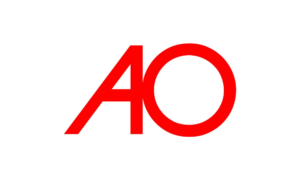Optakt til ECB møde torsdag den 26. oktober:
Fra zerohedge:
The main risk event in the coming week, in addition to a barrage of corporate earnings, will be the ECB’s long-awaited announcement of what the central bank’s QE tapering will look like.
Conveniently, thanks to a trial balloon released on October 12, we already know the general parameters of this phasing out of monetization: ECB officials are considering cutting their monthly bond buying by at least half, from €60BN to €30BN, starting in January and keeping their program active for at least nine months, with some potential reference to a lengthening of the maturity of purchases.
According to a Bloomberg survey, the ECB will likely keep buying for about nine months to take the program to just over €2.5 trillion, respondents said before the ECB’s Oct. 26 decision. That’s consistent with what some officials see as the limit in the market under current rules. ECB President Mario Draghi is predicted to announce his first interest-rate increase in early 2019.
“There has been no dissenting voice at the ECB ahead of the meeting on the need to scale down net purchases,” said Maxime Sbaihi, an economist at Bloomberg in London. “So the question is less ‘if’ they will taper than the details of ‘how’ they will do it.”
Why not taper more? Simple: Mario Draghi is terrified of starting another bond (or stock) tantrum, if investors are spooked that the ECB is withdrawing too much support: “The Governing Council seems concerned that a more aggressive tapering plan could harm financial conditions, especially by letting the euro appreciate even more,” said Kristian Toedtmann, an economist at DekaBank in Frankfurt.
Meanwhile, the major sticking point among ECB governors appears to be whether to commit to an end-date for QE. Draghi has expressed confidence that the region’s economic recovery will eventually help him and his peers to deliver on their mandate. Yet inflation was 1.5% in September and ECB’s own forecast doesn’t see it returning to the goal of below but close to 2% before the end of 2019.
“It seems that the hawks want a definitive end-date while the doves want it open-ended,” Alan McQuaid, an economist at an economist at Merrion Capital in Dublin. “I think we will get a compromise, with the ECB saying that it intends to end its QE scheme in September 2018, but if things take a dramatic turn for the worse on the economic or inflation front in the meantime, it will extend its scheme further until things have stabilized.”
Which is why many model QE as lasting beyond the 9 month horizon, and running through the end of March 2019.
In terms of market consensus, the following Barclays chart visualizes the most likely outcome, showing monthly QE declining by 50% in January through October, when it tapers by another 50% until March 2019, coupled with a modest increase in the ECB’s deposit rate around the end of 2018.
But, as Bank of America asks, what if things don’t turn out that way? In the table below, the bank’s rates analyst Erjon Satko attempts to respond to the many questions the bank has gotten regarding possible market reactions to different decisions in terms of QE size/length but also to changes in the three technical aspects that matter in our view: the rates forward guidance, the maturity of QE purchases and the split between safe and risky assets (periphery, private assets).
Here are BofA’s observations on the various scenarios:
- In the €40bn/6m, we assume the ECB would leave the door open to a further extension, ruling out a cliff end (from €40bn to 0). That scenario, as well as the €30bn/12m would ultimately represent a large total QE amount. We thus assume that flexibility will be engineered with technical changes that should imply greater support for risky assets (this would be bullish the periphery and could also fuel a steepening in long-end swaps).
- In the €20bn/12m and even more so the €20bn/9m, the first market reaction should be bearish as the quantum of monthly Bund purchases is lower than expected. However, as previously discussed, we think the behavior of the periphery and risky assets in general will then guide term premium in Bunds. Hence the “then see periphery” in Table 1.
- Purchases skewed towards risky assets: For example, if the ECB hints to more limited tapering of private asset purchases relative to PSPP, or if it increases the share of EU supras, implying greater potential for deviations from capital keys, in favor of Italy and France.
- Extension of the maturity of purchases: the ECB could suggest that reinvestments will happen at a longer maturity than recent net purchases, or it could make more significant comments to signal longer overall purchases. As discussed last week, on way for the ECB to make this concrete could be that it drops the 30y maturity limit on eligible bonds
Yet despite the ECB’s tapering trial balloon, one surprising market reaction has been the recent decline in Bund yields together with the BTP spread tightening which according to BofA has “taken many by surprise, especially in light of the ever-decreasing expectations of QE support next year.” In fact, while market expectations for 2018 ECB QE have been edging lower from €60bn/month to €40bn/month and now to €20-30bn/m, current valuations fail to give evidence of major concerns ahead of the tapering announcement. Of course, that may change once Draghi’s media jawboning becomes fact; alternatively this may simply be more evidence of what Citi’s Matt King provocative claimed this past summer, namely that the “market” has become so distorted by QE, it has lost the ability to discount the future.
* * *
In modeling market reaction scenarios to the ECB’s October 26 announcement, nobody anticipates a major market shock. In fact, some – such as Citi – expect various permutations of the QE tapering to be actually seen as dovish for the market. As we discussed last Saturday, Citi’s EONIA-signaling driven model seeks to predict the near-term market impact (around one-week) across the euro swap and Bund curve for a range of QE scenarios.
Below are its key findings:
- For 10yr Bunds, yields fall around 25bp in the most dovish scenario (€40bn x 12mth) and rise around 24bp in the most hawkish scenario (€20bn x 6mth). Figure 1 above summarizes the full set of results for Bunds.
- The most market neutral scenarios, according to the model, are €20bn x 12mth, €30bn x 9mth and €40bn x 6mth.
- This is broadly consistent with the Reuters poll (taken 11-14 September) which suggested the consensus amongst economists was for €40bn (range €30- 50bn) over 6mths (range 3-12mths).
- Cross-checking the model output (based on policy signals) with the total size of APP extension shows a clear relationship (Figure 2). The model therefore assumes that there is less of a role for the ‘intensity’ of purchases.
- The market neutral size for APP upsizing appears to be around +€250bn
- The Citi house view is for an extension in the form of an ‘envelope’ (without specifying a monthly purchase rate) of €150bn (with upside risk of €210bn). That could lead to a near-term sell-off of around 15-20bp.
- The scenarios presented assume deliverability. But, the most dovish options undoubtedly would be more challenging to implement (see below) given scarcity constraints. In terms of likelihood, we would put less weight on these scenarios which skews the risk towards a bearish reaction on 26 October.
Finally how should one trade the ECB announcement? Here Barclays’ confusion reflects the (confused) trader’s mindset best: “we do not see compelling risk-reward in pre-positioning in EUR ahead of the ECB announcement, given shifting expectations and difficult in gauging how the market is pricing the parameter changes.”
Translation: stop trying to pretend you know how the market will react to the ECB, and just wait for the announcement. Here’s hoping you are faster to react to the news than the HFTs…. and mind the direction of the initial kneejerk reaction, which is usually just the algos taking out all the stops.


















